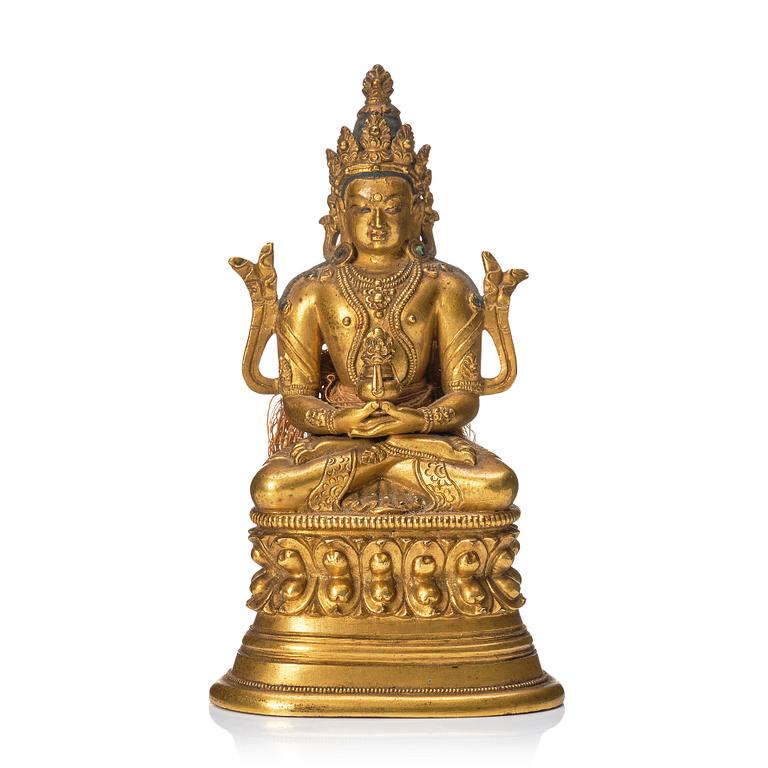Amitayus, förgylld brons. 17/1800-tal, möjligen Monglisk.
Gjuten sittandes i vajraparyanaksana på en hög dubbel lotustron, båda händerna i en dhyana mudra uppbärandes en bumpa. En avacerad håruppsättning kröns av en stor krona, hängande örhängen, klädd i en löst sittande dhoti som ligger i eleganta veck under honom på lotusbasen. Spår av kallförgyllning och emaljfärger. Höjd 14,5 cm.
Slitage.
Litteratur
Tibetan Buddhism was patronized by the Qing emperors, both for personal and political reasons, resulting in a surge in the production of Buddhist sculpture and painting. During the reign of Qianlong, the artisans of the Beijing workshops increasingly emulated sculpture from different periods and geographic areas, using as models the bronzes given as gifts from Tibetan dignitaries to the Qing court. Examples of Pala-style sculpture, from ninth-twelfth century Northeastern India, still remain in The Palace Museum Collection. Compare with a Pala-period bronze figure of Vajrasattva, illustrated in Cultural Relics of Tibetan Buddhism Collected in the Qing Palace, Beijing, 1992, Catalogue no. 56, and with a Pala-style Tibetan brass statue of Manjushri (see ibid., cat. no. 53).
























































